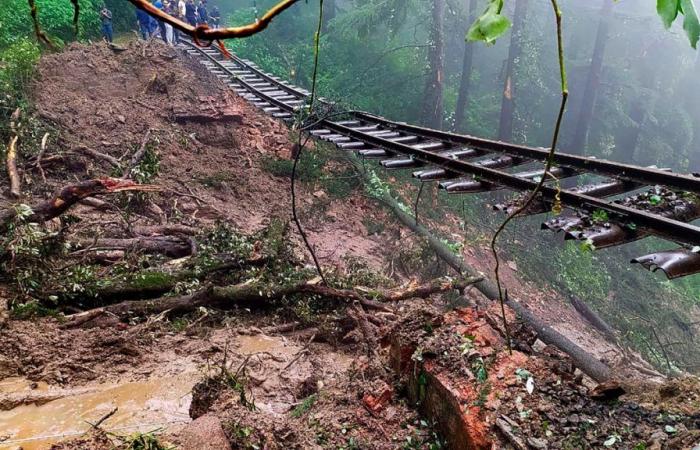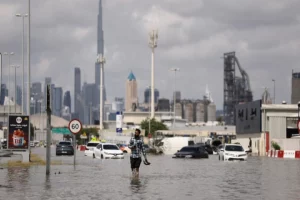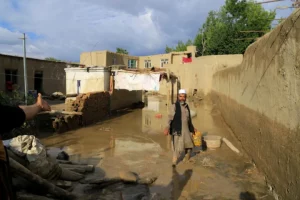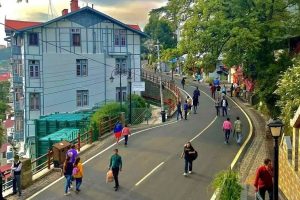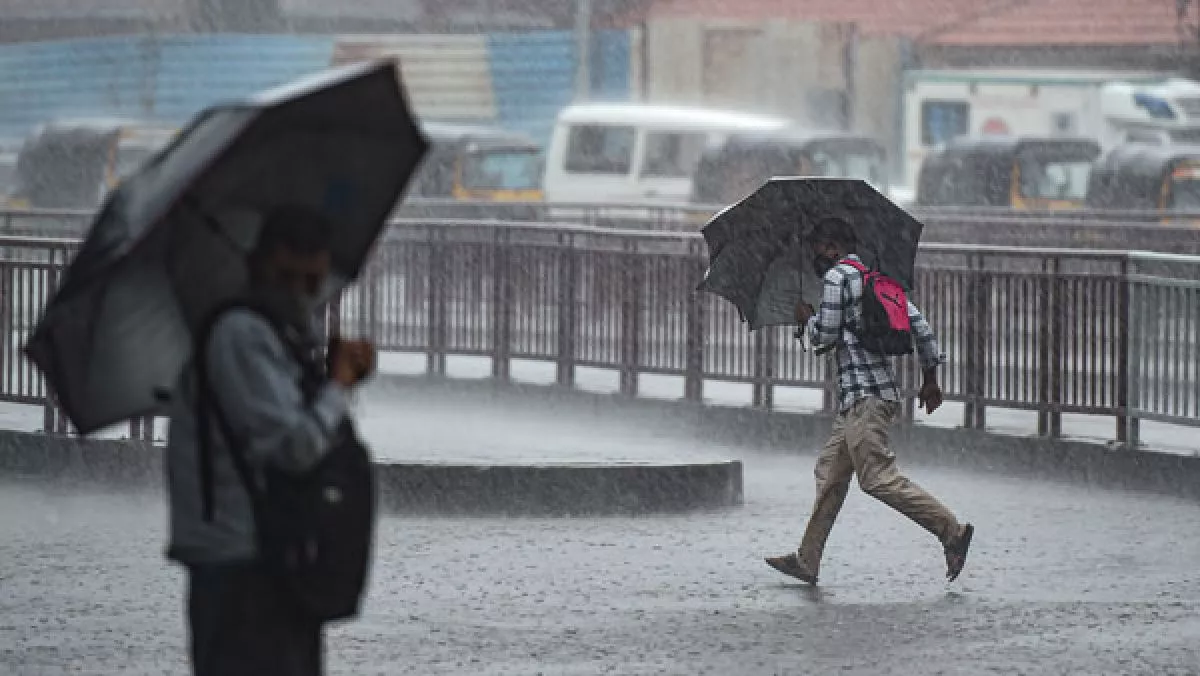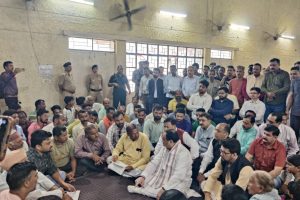Shimla: The 1898-built Shimla-Kalka Railway line, which is a UNESCO world heritage site, has been damaged near Summer Hill with a 50-metre track seen hanging in the air since Tuesday as unprecedented rains wreak havoc in the region.
Nearly 6 km short of Shimla, the heritage track is part of the wider death and destruction in Himachal Pradesh caused by landslides and flash floods triggered by incessant rains that are being seen as a fallout of climate change.
In fact, the track has also been damaged at five or six other places and the most affected stretch between Shimla and Shoghi confirms station master Joginder Singh adding “It may take at least two weeks to repair the track depending on the intensity of rains.”
Earlier also all the trains were suspended on the Shimla-Kalka railway track on July 10 as incessant heavy rains had obstructed the track at several places due to landslides and fallen trees.
However, a special train was introduced on the Shimla-Solan stretch of the railway track on July 20 after the route was declared fit by the railway authorities.
The 96-km long Shimla-Kalka Railway track was laid by the Britishers in tough hilly terrain with 103 tunnels, 800 bridges, 919 curves along with negotiable gradients.
The track now has 102 tunnels after the collapse of its 46th tunnel, gains an altitude of about 1,590 metres and is considered an engineering marvel.
Meanwhile, 71 persons have died in the past four days in various rain related incidents. As many as 13 bodies recovered so far, after a 72-hour long search and rescue operation at Shimla’s ill-fated Shiv Mandir landslide site and 1300 people marooned in devastating floods in Kangra region, describes the scale of nature’s fury that has struck the Himachal hills.
Never in their lives, have many people as old as 80 years, recalled nature being so furious in Himachal Pradesh—‘Dev Bhumi’ . The total death toll due to relentless rains, landslides, floods and cloud-bursts has already risen to 328 even as 38 people are reported missing.
The property losses are estimated at Rs 7500 crore.
“It’s an extremely unprecedented situation. I have been passing through some heart-wrenching moments during the past few days. Only tears have not rolled down from my eyes, which have not dried-up as I am visiting every single site of tragedy” Chief Minister Sukhwinder Singh Sukhu told India Narrative this morning.
He says redeveloping the infrastructure which got washed away in the torrential rain and floods or damaged by the landslides will take at least a year.
“A mountain-like challenge is in front of us,” the chief minister said.
The hill town of Shimla – a three lakh strong population town visited by lakhs of tourists every season is the new epicentre of the tragedies wiping out families .A fresh landslide that hit Shimla on Tuesday in downhill Krishna Nagar locality brought down buildings to the ground like a house of cards. The videos which have gone viral are scary.
The ancient Shiva temple, which stood witness to people’s faith for years, is reduced to rubble as bodies lay dismembered underneath after a landslide smashed the shrine. Among those buried alive included seven members of a family, three children and a seven–month pregnant university professor along with her husband.
Only 13 bodies have been recovered so far as eye witnesses fear 22-25 people dead.
Why Shimla’s buildings are coming down like this has spread panic among the local natives living in the congested localities, which have become sliding down. The hill slopes have lost forest over and soil strata has become very loose.
Former deputy Mayo of Shimla Tikender Singh Panwar points out that the urban landscape in the Himalayas, many settlements and houses, are coming up on water streams and water bodies.Thinking that the mighty RCC(reinforced cement concrete) structures are potent enough to provide resilience and strength is proving wrong.
“Many buildings in the town –one in Krishna Nagar and Fagli have collapsed since these were raised either on water bodies, bauris, springs , or blocked culverts. Shamti in Solan, Krishnanagar in Shimla, some houses near St. Edwards are a few examples” he says.
Panwar suggests that it was high time for a major shift on the land use patterns as Shimla has lost its carrying capacity and blocked water drainage system and rivulets in the town—which once considered as protectors of seepages are now threats. The development plans should focus on geological based zonal and sub zonal plans.
The questions are also being raised dnow on state government allowing opening of the town’s well protected green-belt for constructions and permitting attics (top space) to be converted into habitable areas.
“Both these steps apart from shutting down eyes from haphazard constructions in the hill town to seal the fate of Shimla” asserts Neera Mehta, an old native and retired environmentalist scientist –now living in Delhi.
Also read: Gadkari assures Himachal of Rs 400 crore package to fix highways, bridges damaged by monsoon fury






